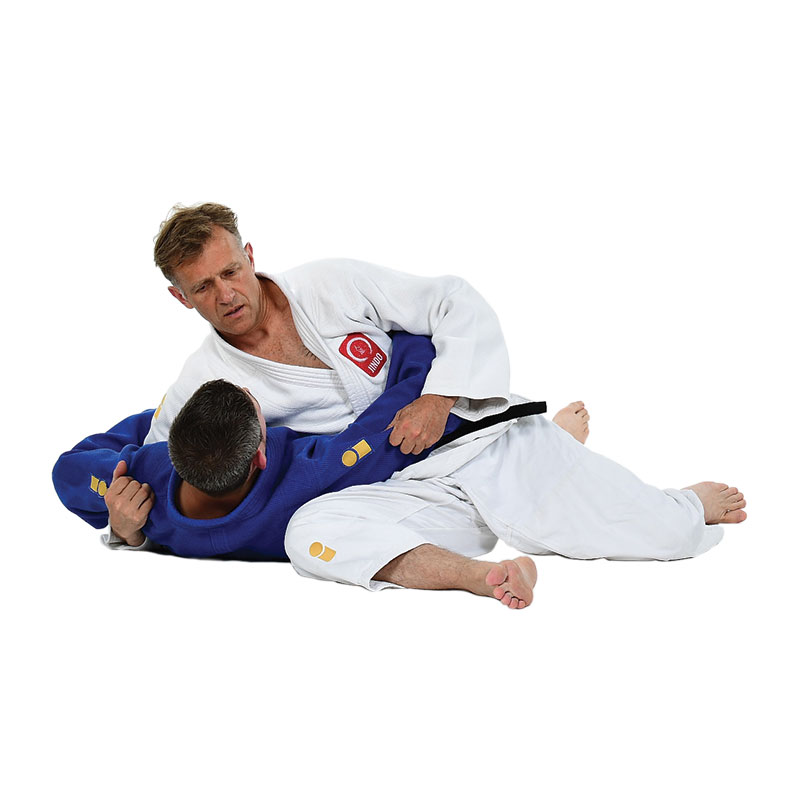Kuzure-kesa-gatame 崩袈裟固 (Modified Scarf Hold)
Classification: Katame-waza → Osae-komi-waza (Holding Techniques)
Kuzure-kesa-gatame is a modified version of the classic Kesa-gatame (scarf hold) and is the first hold-down technique demonstrated in the Katame-no-Kata. The word kuzure (崩れ) means “broken” or “modified”, referring to the altered grip compared to the traditional scarf hold. The term kesa refers to the Buddhist monk’s robe draped across one shoulder and under the opposite arm — the imagery that inspired the posture of this pinning technique.
Unlike the standard version, this variation avoids wrapping around uke’s neck, offering better control options and reducing the risk of neck pressure.
Execution
Tori controls uke from the side, facing uke’s head:
-
Tori sits beside uke with the right leg stretched out and the left knee bent, forming a stable base.
-
The left arm of tori reaches under uke’s right armpit and controls the far shoulder or lapel from underneath.
-
The right hand controls uke’s left arm or grips the near lapel or belt, securing uke’s torso tightly.
-
Tori keeps their chest low and close to uke’s upper body to maintain pressure and limit movement.
This variation increases versatility and is especially useful when uke resists traditional neck control.

Escapes
Uke can attempt several escapes from Kuzure-kesa-gatame:
-
Leg trap: Uke uses their legs to entangle and trap tori’s stretched leg to break the balance and free themselves.
-
Bridge and crawl (ebi): Uke bridges and scoots away from tori (shrimping) to create space, then turns in and sits up or rotates inward.
-
Reverse roll: Uke closes the gap, reaches around tori’s waist, and uses a powerful bridge to reverse the position.
Tip: A successful escape often relies on creating movement from tori. For example, by pushing into tori to provoke a reaction, uke can use the resulting force to roll or slip out.
Transitions and Variations
From Kuzure-kesa-gatame, tori has access to several follow-ups:
-
Joint locks (Kansetsu-waza): Especially arm locks, such as ude-garami or juji-gatame.
-
Strangles (Shime-waza): Depending on tori’s arm position, transitions into sankaku-jime (triangle choke) are possible.
-
Pins: Tori may transition into kami-shiho-gatame or makura-kesa-gatame for added control or tactical repositioning.
Kuzure-kesa-gatame is valued for its lower risk of injuring uke’s neck and is often preferred in situations where safety or control over the far side of uke’s body is prioritized.